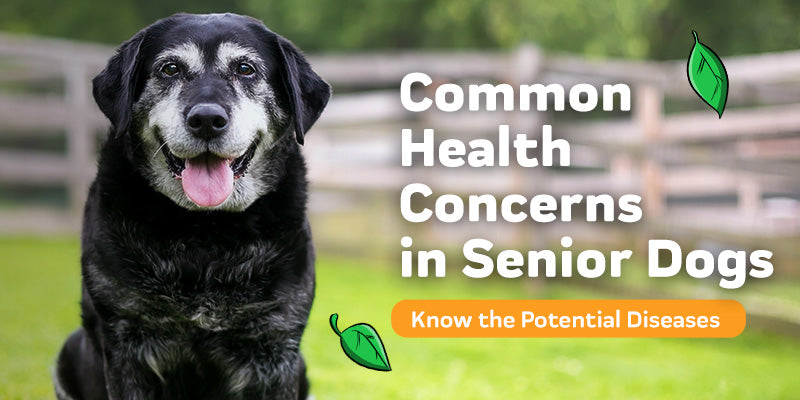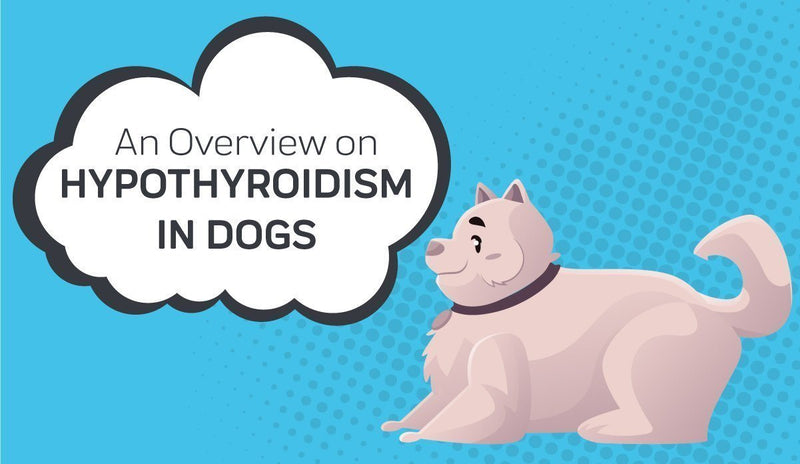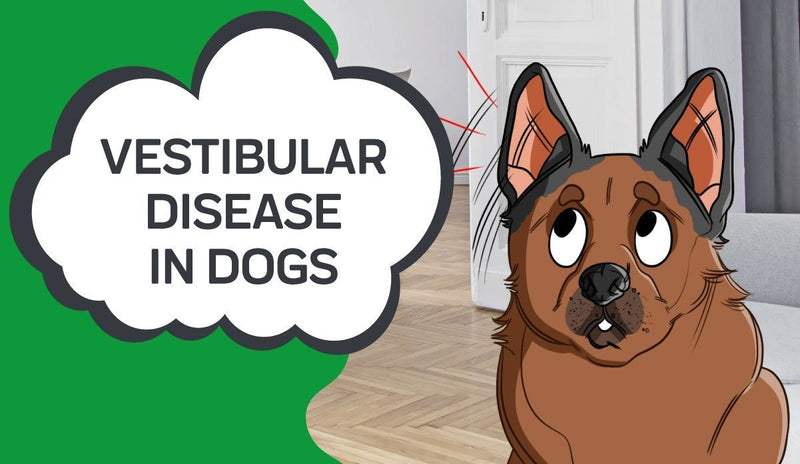 Canine hypoglycemia, or low blood sugar in dogs, is a life-threatening but often preventable condition. It can also be a symptom of other diseases. You should know the canine hypoglycemia symptoms as well as prevention tips for hypoglycemia in dogs to keep your dog safe.
Canine hypoglycemia, or low blood sugar in dogs, is a life-threatening but often preventable condition. It can also be a symptom of other diseases. You should know the canine hypoglycemia symptoms as well as prevention tips for hypoglycemia in dogs to keep your dog safe.
Canine hypoglycemia
Hypoglycemia is low blood sugar as opposed to hyperglycemia which is high blood sugar. There is a healthy range of fluctuating blood levels for dogs that impacts many of their crucial bodily functions.
A healthy dog's blood glucose level should be within 80 to 120 mg/dl. Less is hypoglycemia, more is hyperglycemia, and the farther the numbers are from normal, the more serious the condition. Slightly low blood glucose impairs bodily functions, and a blood glucose level of 40 or less is fatal.
It is normal for their blood glucose to fluctuate to the extremes of the normal range, from 80 to 120 in a day. Their bodies are supposed to deplete and build glucose depending on their activities. Blood glucose should be lowest when the dog has been sleeping for a long time and highest while eating and playing.
Poor health due to circumstances or a disease can lead to hypoglycemia or hyperglycemia where the dog's body can't create enough blood glucose to maintain bodily functions or creates too much and impacts how other bodily systems operate.
Causes of hypoglycemia in dogs
Primary hypoglycemia in dogs can be caused by external factors, such as:

- being too cold
- excessive exertion, because the dog's body depleted itself so low it can't rebuild fast enough
- drastic diets, usually to manage obesity
- malnutrition, from lack of care, an improper diet, dental problems, or digestive problems
- too much insulin
Secondary hypoglycemia in dogs can be caused by:
- Addison's disease, because the adrenal gland helps glucose travel through the body
- Diabetes, because it impacts insulin production and/or requires insulin treatments
- Insulinoma, because these tumors make the body produce too much insulin
- Liver disease, because the liver impacts all glucose actions
- Parasites in the intestines because the parasites eat glucose
- Portosystemic liver shunts because they make the liver not function normally
- Sepsis, because this extreme inflammatory response impacts glucose production
Puppies have a particular susceptibility for developing hypoglycemia because their bodies aren't well developed. The things that could make an adult dog suffer hypoglycemia are more likely to cause it in puppies, particularly in the case of cold weather.
Hypoglycemia in dogs with diabetes is quite common because their owners don't taper the amount of insulin as the dog's weight and needs change or because someone accidentally double doses them.
Hypoglycemia from exertion is particularly likely with hunting dogs (which is why many people search online every month for hunting dog hypoglycemia) or dogs heavily engaged in sports.
It is not uncommon to see hypoglycemia in pregnant dogs. Their bodies use a lot of glucose, so any additional stress like not eating enough at the end of their pregnancy could lead to hypoglycemia.
Symptoms of hypoglycemia in dogs

Hypoglycemia in dogs may be mild or severe, but it is important to recognize the signs while it is still mild so you can keep it from becoming severe.
Mild hypoglycemia symptoms in dogs include the following.
Lethargy is one of the most common signs of hypoglycemia. If the dog appears weak or exhausted, cuts out of activities early, or naps an excessive amount, they may be suffering from low blood sugar. Consider whether there are any other reasons you can think of for why the dog would be tired and compare it to potential reasons why they may have low blood sugar as well as whether there are other symptoms.
Loss of appetite in dogs may appear as the dog not eating as much, not being as eager for food, or not eating at all. They may not even eat their favorite foods. You can catch this earlier if you have a strong feeding routine and ensure you are giving them the same amount of food each time.
Twitching is small, repetitive muscle contractions. But dogs can do this simply when they are anxious or dreaming. To determine if twitching is likely to be caused by hypoglycemia, consider whether they do it when awake and if there is any reason for them to be anxious or fearful at the moment.
Then there are moderate hypoglycemic symptoms in dogs.
Lack of coordination like poor balance, stumbling, and inability to walk or stand normally could be caused by hypoglycemia.
Odd behavior is a broad term meant for pet owners to acknowledge that they know their dog and can recognize when they are acting out of character. If your dog just doesn't act right, there is something serious wrong with them and hypoglycemia may be it.
Trembling is more constant than twitching. It can be caused by pain, cold, or anxiety, but if you aren't aware your dog has reason to be any of those things, then their trembling could be hypoglycemia.
These symptoms of dog hypoglycemia are severe.
Loss of vision may range from blurred vision to reduced vision to blindness. You can tell if your dog is suffering any of these because they don't react to things as quickly or accurately as they normally would, they run into things, or they don't react to visual stimulation at all. They will likely be stressed by their inability to see well.
Seizures are a very serious symptom of a higher degree of hypoglycemia. Seizures may involve convulsions or simply strange behavior. If you see your dog having what you suspect is a seizure, try to keep them from hurting themselves by moving things away from them that may fall on them, or moving them if need be, such as if they are near stairs, but don't try to hold them down or restrict them. When they have stopped or if they don't stop within 3 to 5 minutes, get them to the vet immediately, even if it is afterhours.
Unconsciousness is a symptom of severe hypoglycemia. Rub a sugary liquid on their gums to see if you can revive them. If not, call the vet, even if it is afterhours, so they can tell you what to do to revive the dog and get the dog to their office. You may have to do CPR, should they have stopped breathing or their heartbeat stopped.
What to do in the event of possible hypoglycemia in dogs

If your dog is conscious and not having a seizure, the first thing you should do is try to feed them. Depending on how poorly the dog is acting, you might try regular food or one of their favorite foods first. If the dog can't or won't eat even their favorite food, grab some honey, corn syrup, Karo syrup, fruit juice, or water mixed with sugar and rub it on their gums.
Get the dog to the vet as quickly as possible. If it is after-hours, call your vet's office or an emergency vet number you already have on hand to discover where to take your dog, or if they have some advice for you before leaving home.
When you get to the vet's office, they will want as detailed information on the dog's symptoms, what they've eaten, what they've taken, and what they've done recently as you can give them. If you did things like give them food or sugar water and it revived them some or at all, the vet will also want to know that.
The vet will be observing the dog and performing blood chemistry, blood count, and urinalysis tests to determine if the dog has hypoglycemia and how it has impacted their organs.
If they suspect the hypoglycemia may be a side effect of another disease, they will run diagnostic checks for the one(s) that it appears it may be. This may require an ultrasound, cortisol test, electrolyte test, serum biochemistry, or thyroid test.
How to treat low blood sugar in dogs
Treatment depends on whether the hypoglycemia is primary or secondary.
The hypoglycemia itself will be treated with oral or intravenous fluids containing glucose.
If caused by an external factor, the vet will then need to help you devise a plan to ensure this doesn't happen again. This will probably include informing you of potential factors causing hypoglycemia and advice for adapting the dog's diet, insulin dose, or lifestyle to prevent a recurrence.
Otherwise, the hypoglycemia must be coming from another disease or condition and that underlying factor must be treated to keep low blood sugar from being a perpetual problem as well as to stop the other risks of the disease or condition. This may include treatments or surgeries, or lifelong management strategies, depending on the underlying cause.
Preventing hypoglycemia in dogs
You can't foresee or control all the external factors that may cause hypoglycemia, and you certainly can't keep your dog from developing a disease or condition that leads to hypoglycemia, but the following list can make it much less likely that it will happen to your dog.
Prevent hypoglycemia in dogs by:
- changing your dog's insulin dose with their changing weight
- keeping an insulin dose chart that all family members can see and use
- limiting their ability to eat soil, insects, or other things that may expose them to parasites
- feeding them high-quality foods
- feeding them a nutritious diet, if you have to give them a special diet, run it by your vet
- reducing their obesity through more gradual means than crash diets or extreme exercise
- fasting your dog only when required by the vet and by following their instructions
- maintaining a scheduled, measured food routine so you can more readily notice if your dog starts eating less rather than waiting for them to stop eating or show a drastic change
- keep up with the weather, don't leave your dog alone in an unheated house or out in the yard without ensuring the weather is warm enough
- being mindful of their nutrition intake and excessive exertion when engaging in demanding physical activities with your dog or encouraging them to engage in such activities alone
Hypoglycemia in puppies prevention
- leave a measured amount of dry food out for them all day
- be extra careful that they don't get cold
- following the prevention tips for adult dogs
Hypoglycemia in small dogs
Like puppies, small dog breeds have small bodies and they may not be able to deal with the cold as well as a large dog. Puppies of small breeds are most susceptible to hypoglycemia. So, when you have a puppy or a small breed dog or a small breed puppy, be particularly vigilant to prevent and detect hypoglycemia.
Food for hypoglycemia in dogs
Because diet is important in maintaining healthy blood levels, it makes sense that you want to ensure you are feeding your dog correctly to prevent and control it.
The most important thing is to make sure your dog is eating enough. Simply not getting enough nutrition or fasting is enough to cause hypoglycemia.
Feed them high-quality canned and dry foods at routine intervals based on your dog's weight, age, and energy demands. Your dog should be able to be as energetic as they want to be and maintain a healthy weight, neither being bony or too round on their food schedule. The quality of the food is important because, sadly, many pet food companies sell products that contain more unnecessary or even unhealthy ingredients than they do the nutrients your dog actually needs. It's a way to keep producing the food cheaply so they can sell it cheaply.
Limit their human food intake. Dogs can get full eating unhealthy things and not really want their food or simply get tired of their food when they eat a lot of table scraps.
Chronically hypoglycemic dogs may need a sugary liquid like honey or Karo syrup rubbed on their gums daily or added to their food.
How to test dog blood sugar at home
If your dog is diabetic, you probably already know how to test your dog's blood sugar. But, if your dog is at an increased risk of suffering hypoglycemia from diabetes or any other reason, you may take comfort in being able to check their blood sugar when you suspect there may be a problem.
You can use a glucose meter for humans and test the dog's ear like you would a human's finger. If their ear is cold or not warm, rub it to make it warm as it will help the blood drop form.
Do not use a home test to rule out hypoglycemia unless you have experienced this with your dog before and are quite familiar with it, they are not experiencing significant symptoms, and the symptoms go away. There is the possibility that the meter may be wrong or that your dog may have another problem that needs to be addressed.

How CBD Oil Might Help with Hypoglycemia in Dogs
CBD oil is gaining popularity as a natural option to address a dizzying array of human and pet ailments, but can it help with hypoglycemia?
That's complicated. CBD oil is probably not the best bet for addressing hypoglycemia itself because it shows some evidence of potentially lowering blood sugar.
But it could be an excellent way to help prevent hypoglycemia from occurring or addressing the underlying cause of the hypoglycemia.
The benefits of CBD oil for the potential of hypoglycemia include:
- increase in appetite
- helping the body manage blood sugar
- reducing stress and depression that may cause a loss of appetite
- easing nausea and digestive issues that may keep the dog from being able to eat
- reducing pain and inflammation in the mouth that may keep the dog from eating
- killing cancer cells
- easing the side effects of medications for an underlying condition so the medication can continue to be taken
- replacing a traditional medication for an underlying condition that can't be taken by your dog
You could talk to your vet about the risks versus benefits of using CBD oil to help address hard-to-treat ailments that may cause your dog to develop hypoglycemia or to supplement or replace medications that are too harsh for the dog to take. Many vets are supportive of and knowledgeable about CBD oil for pets and can help.
Innovations from Innovet
If you discover CBD oil is right for your dog, you might choose one of our CBD oil tinctures, capsules, crunchy treats, or soft treats. Our products are scientifically backed, and proven by third-party lab tests to contain only the ingredients you think are in there and none of the ones you think aren't.
We also create new products for pets with so far untreatable ailments. If no traditional or natural option has helped your dog or solved another pet problem you have, let us know and we might be able to come up with a solution.
Sources:
Hypoglycemia in dogsDiabetes in Dogs
Diabetes Mellitus in Dogs
Diabetes Mellitus

















